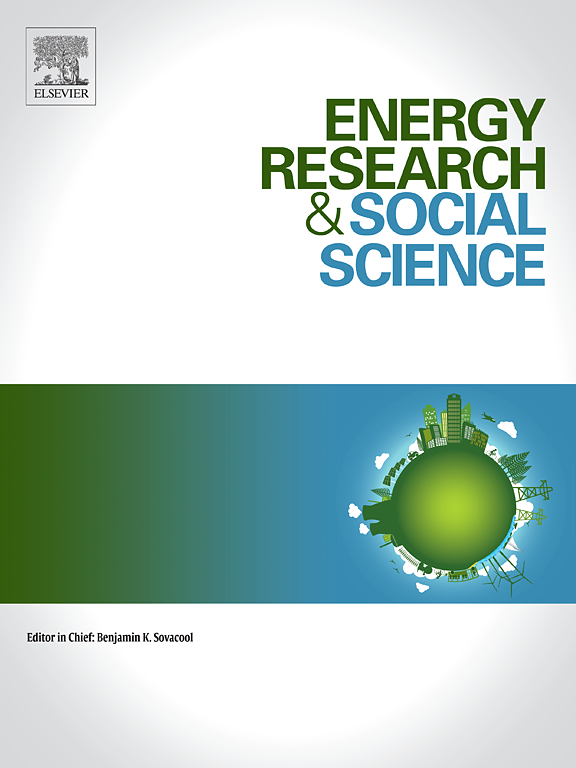An investigation in synergy: The intersection of historic building retrofit and the heritage of traditional building craft practices in the United Kingdom
IF 6.9
2区 经济学
Q1 ENVIRONMENTAL STUDIES
引用次数: 0
Abstract
Historic building retrofit is increasingly seen as one solution for tackling the climate crisis. It involves understanding traditional construction methods, material behaviour, and the cultural heritage impacts of adaptation. Shifts toward holistic perceptions of heritage have led to international recognition of intangible heritage values. Traditional building crafts embody such values, as cultural expressions reflecting regional styles, knowledge and techniques. Yet in the UK building conservation sector, and despite recent UK ratification of UNESCO's 2003 Intangible Heritage Convention, the practices of historic building retrofit and traditional building craft are pursued simultaneously but as distinctly separate workstreams. This limited interpretation of heritage value in a retrofit context sits in stark contrast to the wider accepted notion that many traditional building craft practices are under threat.
This exploratory study asks ‘is there opportunity for greater synergy between historic building retrofit and traditional building craft, in a manner that brings mutual benefits to both practices?’. Following a review of existing literature, in-depth interviews were held with ten professionals across a range of heritage specialisms to understand the potential for greater synergy. The findings show that greater synergy could benefit both the emerging need for historic building retrofit and facilitate the safeguarding of craft skills by widening their reach and relevance. Perceptions of craft practice, attitudes to collaboration and a lack of targeted incentives are revealed as barriers to implementing an intersectional approach. The study concludes by identifying future research potential that may inform whether a synergised approach should be incentivised in UK heritage policy.
协同研究:英国历史建筑改造与传统建筑工艺传承的交集
历史建筑改造越来越被视为应对气候危机的一种解决方案。它包括理解传统的建筑方法、材料行为和适应的文化遗产影响。对遗产整体观念的转变导致了对非物质遗产价值的国际认可。传统建筑工艺体现了这些价值,是反映地域风格、知识和技术的文化表现形式。然而,在英国建筑保护领域,尽管英国最近批准了联合国教科文组织2003年非物质遗产公约,但历史建筑改造和传统建筑工艺的实践是同时进行的,但它们是截然不同的工作流程。这种在改造背景下对遗产价值的有限解释与许多传统建筑工艺实践受到威胁的广泛接受的观念形成鲜明对比。这项探索性研究提出了这样一个问题:“在历史建筑改造和传统建筑工艺之间,是否有机会实现更大的协同作用,从而为两种做法带来互利?”在回顾现有文献后,我们与10位文物专业人士进行了深入访谈,以了解加强协同作用的潜力。研究结果显示,更大的协同作用,既可以满足新出现的历史建筑翻新需求,又可以扩大工艺技术的覆盖范围和相关性,从而促进工艺技术的保护。对工艺实践的看法,对合作的态度和缺乏有针对性的激励措施被揭示为实施交叉方法的障碍。该研究的结论是确定了未来的研究潜力,这可能会为英国遗产政策是否应该激励一种协同方法提供信息。
本文章由计算机程序翻译,如有差异,请以英文原文为准。
求助全文
约1分钟内获得全文
求助全文
来源期刊

Energy Research & Social Science
ENVIRONMENTAL STUDIES-
CiteScore
14.00
自引率
16.40%
发文量
441
审稿时长
55 days
期刊介绍:
Energy Research & Social Science (ERSS) is a peer-reviewed international journal that publishes original research and review articles examining the relationship between energy systems and society. ERSS covers a range of topics revolving around the intersection of energy technologies, fuels, and resources on one side and social processes and influences - including communities of energy users, people affected by energy production, social institutions, customs, traditions, behaviors, and policies - on the other. Put another way, ERSS investigates the social system surrounding energy technology and hardware. ERSS is relevant for energy practitioners, researchers interested in the social aspects of energy production or use, and policymakers.
Energy Research & Social Science (ERSS) provides an interdisciplinary forum to discuss how social and technical issues related to energy production and consumption interact. Energy production, distribution, and consumption all have both technical and human components, and the latter involves the human causes and consequences of energy-related activities and processes as well as social structures that shape how people interact with energy systems. Energy analysis, therefore, needs to look beyond the dimensions of technology and economics to include these social and human elements.
 求助内容:
求助内容: 应助结果提醒方式:
应助结果提醒方式:


